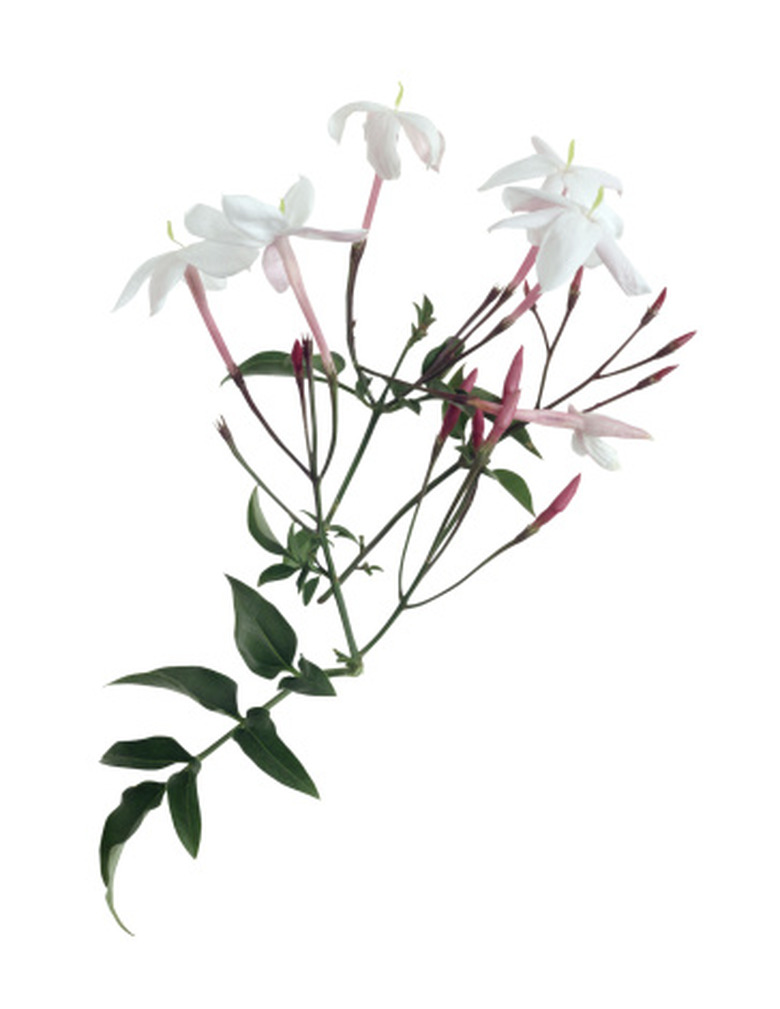How To Care For A Dying Jasmine Plant
Things Needed
-
Frost blanket
-
Fertilizer with chelated iron
-
Insecticidal soap
Jasmine is a variety of vining plants that are closely related to the olive. The blossoms on the standard jasmine variety are white, but other jasmine plants produce flowers that are yellow or pink. Although jasmine is typically a hardy plant that requires little care, it can suffer from some ailments that will cause it to die. If the ailments are detected and corrected early enough, the jasmine will rebound.
Step 1
Feel the surface of the soil under the jasmine plant to see if it is soggy. If so, the plant may be suffering from overwatering. If the jasmine is potted, repot it into fresh soil. If the jasmine is in the ground, stop watering it until the top 4 or 5 inches of soil is dry to the touch.
Step 2
Cover the jasmine with a frost blanket if the symptoms occurred after a frost. Leave the frost blanket on until the cold temperatures subside. Jasmine plants are often damaged by frost, which kills back the vines but not the roots. The plant will regrow in the spring.
Step 3
Look closely at the leaves of the vine. If they are yellow with green veins running though them, it indicates an iron deficiency. Remedy this by applying a a fertilizer containing chelated iron at a rate of 3 to 5 oz. per 100 square feet of soil.
Step 4
Examine the plant closely for cobwebs or a black mold, which indicates the presence of spider mites or aphids. If you see either of these, spray the entire jasmine plant with an insecticidal soap to kill the insects.
